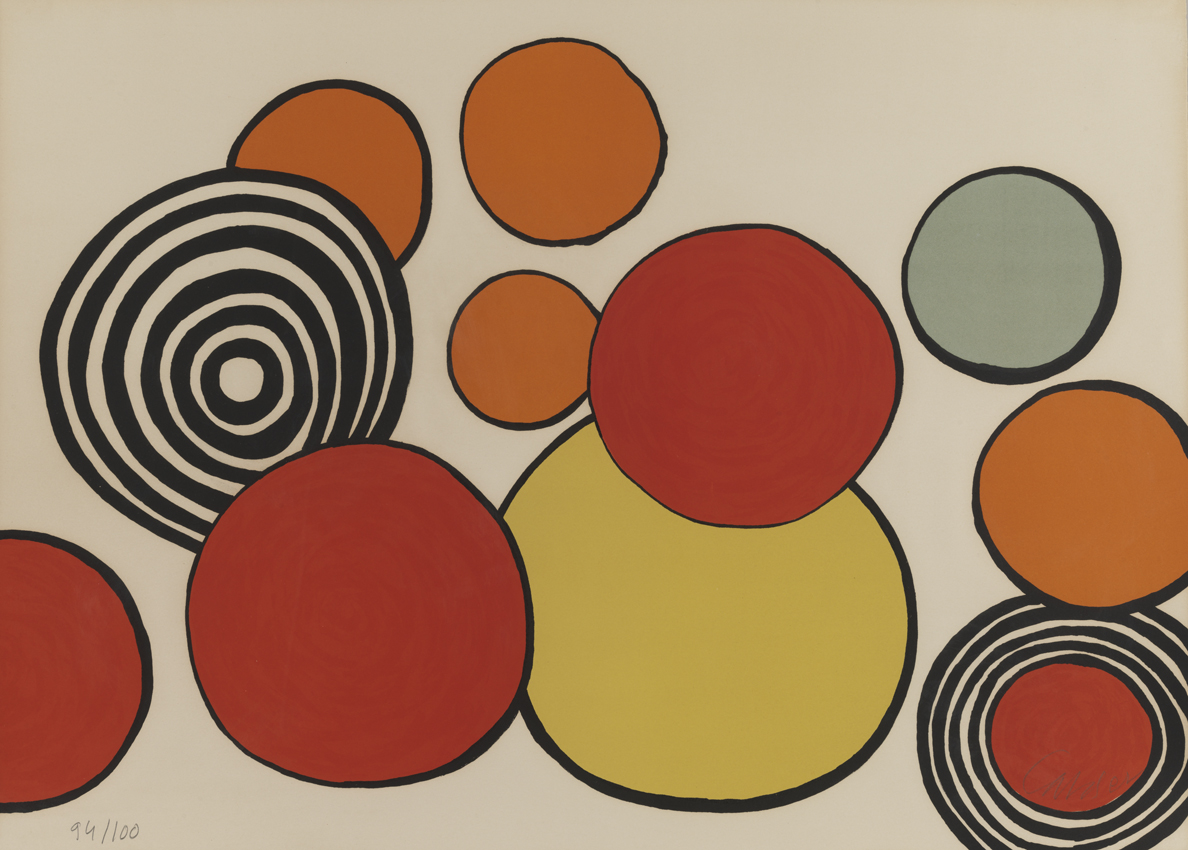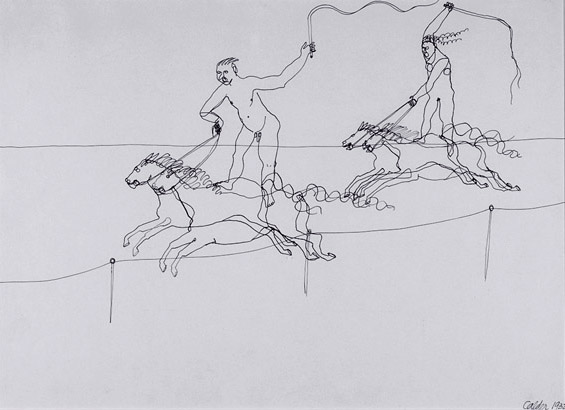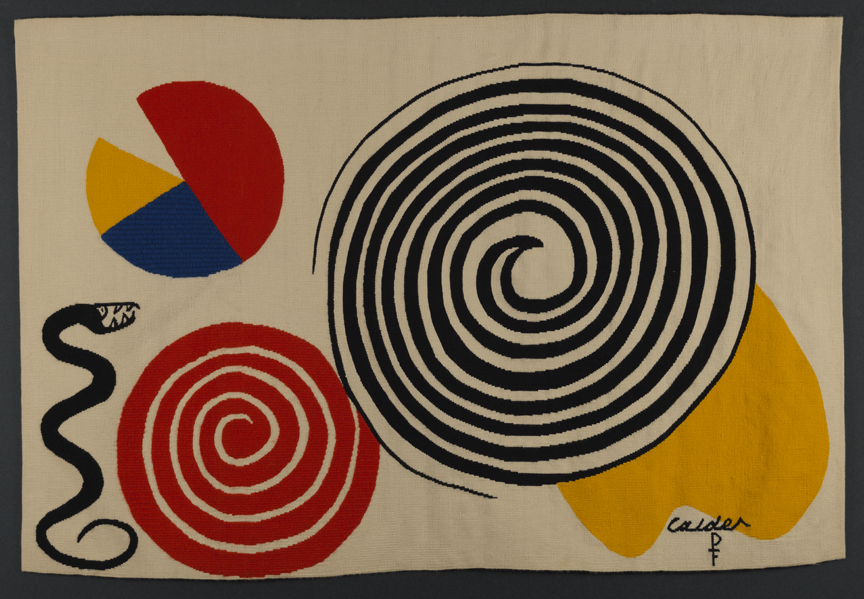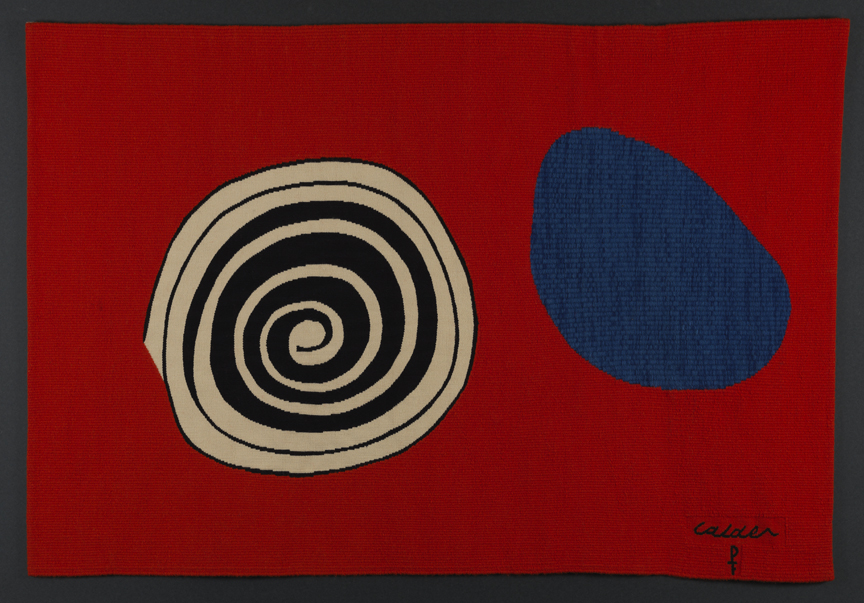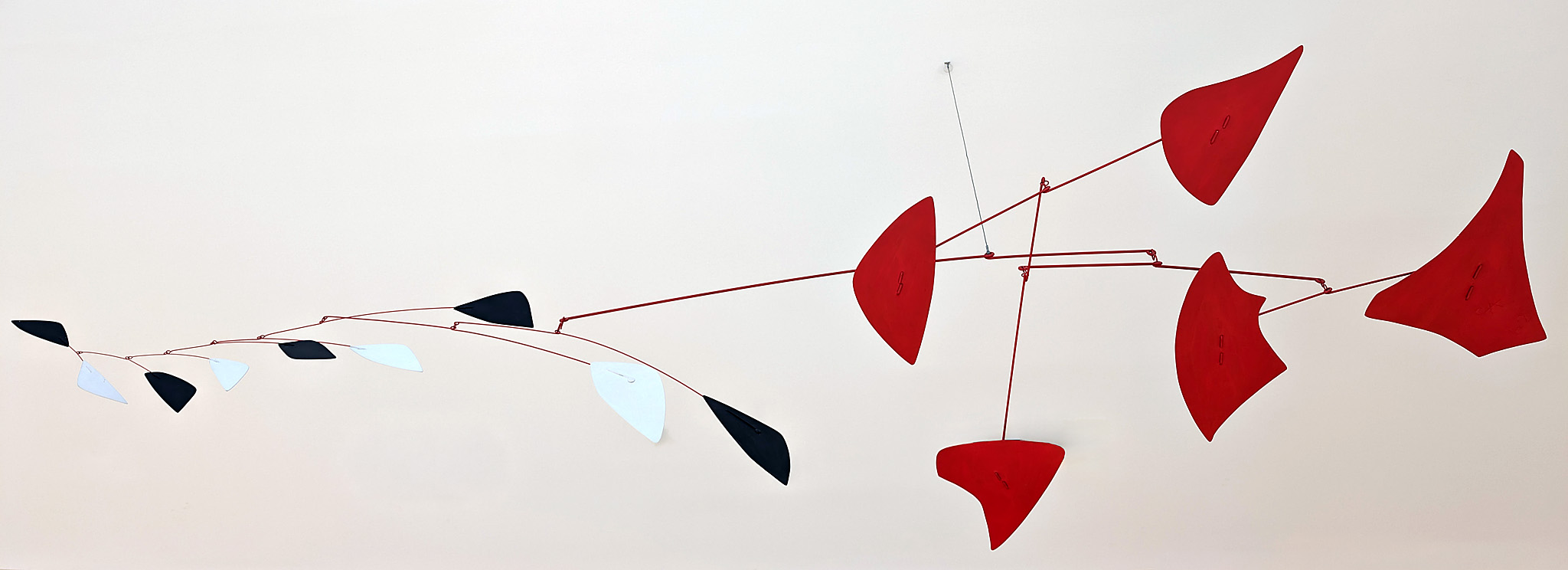
Route Barrée
Alexander Calder
Alexander Calder departed for Paris in 1926, having earned a degree in mechanical engineering from the Stevens Institute of Technology in Hoboken, New Jersey, and having spent some time studying at New York's Art Students League. A 1930 visit to the studio of the painter Piet Mondrian sparked Calder's interest in strong color and abstraction. At about the same time, he met the Surrealists Joan Miro and Hans Arp, whose organic imagery and interest in compositions determined by the laws of chance fascinated him. His motorized and hand-cranked sculptures of the next forty years drew from these sources and were developed in increasingly sophisticated depth and size. Sculptures such as "Route Barrée" move in response to natural air currents and thus depend on random action. After 1950, his mobiles, as well as his stationary sculptures (named "stabiles" by Arp), became larger and more monumental. Many have been commissioned for outdoor installations worldwide. In addition to sculpture, Calder fashioned jewelry, illustrated books, stage sets, and even some industrial and household goods during his long career as one of the most well-known and innovative sculptors of the twentieth century.
Artist
Date of Birth
(1898-1976)
Date
1962
Medium
Steel wire and sheet metal, painted red, white, and black
Dimensions
28 x 130 x 51 in. (71.12 x 330.2 x 129.54 cm.)
Accession #
1962.16
Credit Line
Henry D. Gilpin Fund
Copyright
© Calder Foundation, New York / Artists Rights Society (ARS), New York
Category
Subject
We're so excited you're planning to visit PAFA!
Make time for art — visit us Thursday to Sunday.
Before reserving your tickets, please review helpful information about museum hours, accessibility, building access, and special admission programs.
If you have any questions, feel free to reach out to us at visitorservices@pafa.org — we’d love to help!
